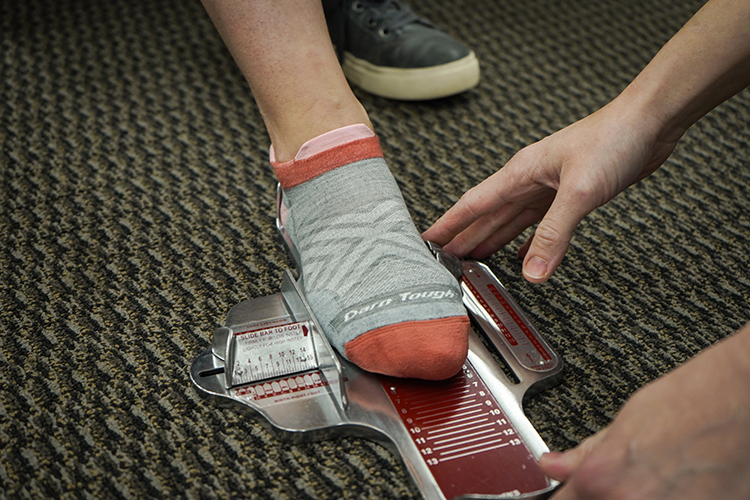 Did you know that you are probably wearing the wrong size shoe? A 2018 study estimated that over half the population is wearing incorrectly fitted footwear. Older persons and those with diabetes are even more susceptible to this problem. Fortunately, you can avoid pain, discomfort, and long-term foot injury by simply knowing how to buy footwear.
Did you know that you are probably wearing the wrong size shoe? A 2018 study estimated that over half the population is wearing incorrectly fitted footwear. Older persons and those with diabetes are even more susceptible to this problem. Fortunately, you can avoid pain, discomfort, and long-term foot injury by simply knowing how to buy footwear.
Penn-Lee is a “sit-and-fit” shoe store where we measure the length of each customer’s foot using a Brannock device. Think of this measurement as a suggestion or approximation; it’s not always the size you will end up buying. After assessing length, we’ll then help you determine the right width. Width can be measured, but more often, we use a “look and feel” approach that takes into account your instep, arch, and overall foot shape. Knowing these things about your feet is crucial to finding the best fitting—and most comfortable—pair of shoes.
Selecting footwear is complex because there is no international standard for shoe sizing and labeling. A size 11 in one brand might be identical to a size 12 in a different brand. Within the same brand, variations abound between shoes that are labeled the same size. Widths are another story. Some styles come in one width. Other styles are made in five widths. While most footwear comes in half sizes, European shoes come in whole sizes only. If you’re between sizes, we have a few tricks in our back pocket to help tighten or loosen the fit. Whew! For all these reasons, it’s no wonder so many people still prefer to buy their shoes in person.
Not only does sizing vary across styles and brands, but a person’s feet can change over the course of a lifetime. Weight gain, weight loss, pregnancy, diabetes, injury, and even the climate can have a profound effect on foot size. At Penn-Lee, we make time for meaningful dialogue with each customer so we can better understand what you’re going through—and give you the tools to make informed, intelligent footwear choices. Your feet will thank you.
Our singular best piece of advice:
